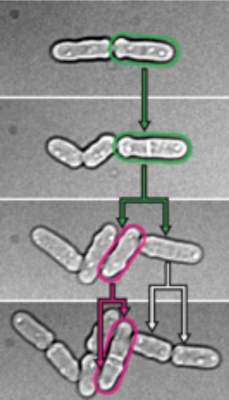
While aging remains an inevitable fact of life, Max Planck researchers have discovered a microbe that stays forever young by rejuvenating every time it reproduces. The findings, published in Current Biology, provide fundamental insights into the mechanisms of aging.
In general, even symmetrically dividing microbes do not split into two exactly identical halves. Detailed investigations revealed that there are mechanisms in place that ensure that one half receives older, often defective, cell material, whereas the other half is equipped with new fully-functional material. So microbes produce offspring that is younger than the parent – like is the case with humans.
The research team showed that, unlike other species, the yeast S. pombe is immune to aging when reproducing under favorable growth conditions. When the yeast is treated well, it reproduces by splitting into two halves that both inherit their fair share of old cell material. As both cells get only half of the damaged material, they are both younger than before. “The yeast is rejuvenated a bit every time it reproduces,” explains Iva Tolic-Norrelykke, research group leader at the Max Planck Institute of Molecular Cell Biology and Genetics (MPI-CBG) in Dresden and lead investigator on the project.
Once subjected to negative influences like chemicals or heat, the yeast cells started splitting into a younger and an older half just like other cells. While the older cells eventually died, their offspring survived long enough to reproduce even in the harsh environments. These findings highlight S. pombe as an interesting organism that could potentially serve as a model of certain non-aging types of cells in humans, such as germ cells, stem cells and cancer cells.
Thilo Gross/Iva Tolić-Nørrelykke
Miguel Coelho, Aygül Dereli, Anett Haese, Sebastian Kühn, Liliana Malinovska, Morgan E. DeSantis, James Shorter, Simon Alberti, Thilo Gross and Iva M. Tolić-Nørrelykke:
Fission yeast does not age under favorable conditions, but does so after stress
Current Biology, 12 September 2013